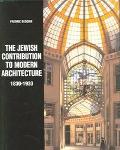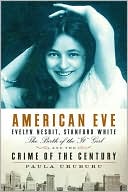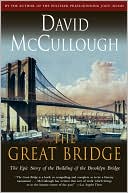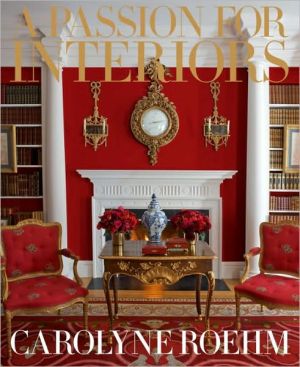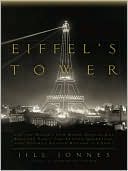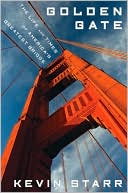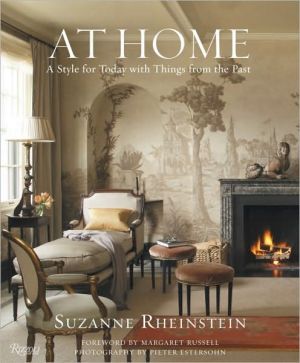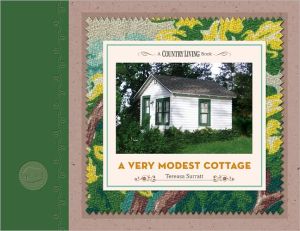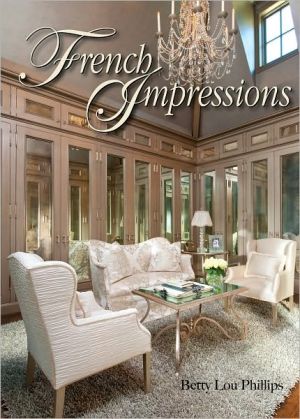Architecture Judaica: Jewish Contribution to Modern Architecture 1830-1930
"A book about architecture and society, a wide-ranging cultural and historical depiction of successful Jewish entrepreneurs in an increasingly industrialized Europe, from the dissolution of the ghetto and the 1848 liberation movement to Hitler's assumption of power in Germany. Inspired by Jewish messianism, they pursued a modern culture, free from the old feudal society." "The principal characters are bankers, merchants, and industrialists together with their architects, from Schinkel and...
Search in google:
Bedoire (history of architecture, Royal U. of Fine Arts, Stockholm) takes architecture as one example of Jewishness as the font and energizer of European culture. He discusses the ghetto background, the house of Rothschild, Berlin, Vienna, Budapest, New York, Göteborg, and other topics. The illustrations are monochrome. Ett judiskt Europa was first published in 1998; the translation, presumable from the 2003 second edition, is by Roger Tanner. Annotation ©2004 Book News, Inc., Portland, OR
THE JEWISH CONTRIBUTION TO MODERN ARCHITECTURE 1830-1930\ \ By FREDRIC BEDOIRE \ KTAV PUBLISHING HOUSE\ Copyright © 2004 Fredric Bedoire and KTAV Publishing House\ All right reserved.\ ISBN: 0-88125-808-3 \ \ \ Chapter One\ The Jewish European as Patron of Architecture \ Feudalism and Capitalism in Nineteenth-Century Architecture\ The revolutionary year of 1848 is a watershed of the European nineteenth century, the beginning of the end for feudalism and an opening toward a liberal society that conceded religious and occupational liberty. The first of the world exhibitions-the Great Exhibition in London in 1851-free trade, and years of a booming economy marked the advent of industrialism. The bourgeoisie became more and more clearly the leading stratum of society, politically, economically, and culturally, at the expense of the older classes.\ In neoclassical Berlin before 1848, we find building dominated by the Prussian royal family and a number of old aristocratic families. This is the time when Karl Friedrich Schinkel designed the royal palace surroundings in the Prussian capital, at the same time creating an intimate private architecture for his clients in the prestigeless classicism that we associate with Glienicke and Sanssouci. Schinkel also expressed Friedrich Wilhelm IV's dreams of medieval feudalism in the newly built Schloss Babelsberg and in the reconstruction of the ruined castle of Stolzenfels on the Rhine, presented to the king by the citizens of Coblenz. The architecture created for the high-born heirs of the age of chivalry is pleasing, and also incorporates oriental touches.\ The Hall of Chivalry, with a large collection of arms and armor on its walls, was a new creation pandering to the inclinations of sentimental aristocrats but without any real medieval antecedents in this form. Pupils of Schinkel, such as Friedrich Hitzig and F. A. Stüler, continued building castles for the same stratum of aristocratic clients, with Schwerin Castle as one of the great manifestations of the age. And at the same time the victor of 1848, the future emperor Napoleon III, underscored his ambitions with one of the century's most comprehensive reconstructions of a secular building, the Castle of Pierrefonds, directed by Eugène Viollet-le-Duc and still unfinished when the emperor fell from power in 1870. A convincing medieval feudal ambience was created, modeled on the Papal Palace in Avignon, with large fireplaces, massive roof beams, richly painted walls, and a hall of chivalry in cathedral style, hung with the emperor's collection of weapons. Pierrefonds was the nineteenth century's most convincing essay in feudal architecture, of greater intensity than Windsor Castle, the British royal family's restoration enterprise in the spirit of Walter Scott, begun during the 1820s and the first major precedent in the revival of romantic chivalry. In Britain, too, it was the old families and the landed nobility who, well into the century, represented the purely feudal side of medievalist building. One of the most grandiloquent adventures in medieval romanticism during the later nineteenth century was the duke of Westminster's Eton Hall, now demolished, designed by Alfred Waterhouse.\ The chivalric novel in Britain influenced tastes in other countries as well. In Sweden, as early as 1830, the books of Sir Walter Scott induced one of the wealthiest ladies in the land, Countess De Geer, to rebuild a large seventeenth-century castle, Stora Sundby in Södermanland, in Anglo-Norman medieval style, based on drawings by the Englishman Peter Frederick Robinson. The great wave of historicizing restorations of Swedish castles came at about the middle of the century and the succeeding decades, conjointly with the rationalization of large agricultural estates, especially in the southern province of Skåme, where the feudal pattern persisted longest.\ Romantic chivalry, historicism, and political conservatism provided aristocrats with important means of preserving their social standing. This is especially noticeable in the states of Germany and in Britain, where the landed nobility constituted a strong rival to the new forces in society throughout the century. In France, where the Revolution in 1789 had punctured the old aristocracy, things looked different. Napoleon III's Pierrefonds manifestation is a comparatively isolated phenomenon. His predecessor, Louis-Philippe, was so much in the hands of the bourgeoisie that his extensive building enterprises-at Versailles, for example-present a medley of styles in which the crusade of medievalism is combined with a distinctly modern attitude to technology and form. The widespread use of medieval forms in France, Germany, and Britain did not necessarily conform to a conservative political program. Instead it gave free and modern treatment of the medieval as an alternative to academically classical architecture. Medievalism was also a point of departure for a pioneer like William Morris, whose high appreciation of craftsmanship and tradition lived on in the aesthetic of Art Nouveau. What Morris imitated from the Middle Ages was not the feudal side but the rural and everyday aspects.\ If the first half of the nineteenth century was dominated by the aristocrats, in the second it was the bourgeoisie who set the tone of things. The advance of the bourgeoisie in Paris under Napoleon III and in Berlin under the kaiser is well known, but we are seldom told who these bourgeois citizens were-the nouveaux-riches, upstarts who introduced a new system of values and a new mentality. In many cases, perhaps, they were not even upstarts, but entrepreneurs rooted for generations past in a well-to-do middle class. To a remarkably great extent it was Jewish entrepreneurs who stood for modernity in the new society. The liberalism that came to pass in 1848 made possible the emancipation of the Jews, whereby they achieved full civil rights. True, there was an important Christian bourgeoisie, such as the Borsigs in Berlin and the Krupps in Essen, but the Jews, headed by the House of Rothschild, set the tone in many of the continental cities. In Britain, where commercial capitalism and industrialism had a long and more complicated history, assimilated Jewish entrepreneurs were less in evidence.\ The classical Palladian villa had become the hallmark of commercial capitalists in the eighteenth century. During the decades before and after 1848, eclecticism developed parallel to the fad for collecting. The bourgeoisie, however, did not just swallow a feudal pattern hook, line, and sinker. Prior to the closing decades of the nineteenth century, there were few instances of the nouveaux-riches building medieval castles and fitting out aristocratic halls of chivalry. Instead, those who had been oppressed in the old society avenged themselves by purchasing and collecting heirlooms and art treasures-tribute to the victor, we might say-that were brought together in new contexts and constellations, with no intention of bringing an earlier period of history back to life. The aim was to create a modern life style that would utilize technical advances and create a new standard of comfort. Walter Benjamin, who finds the key to the interior design of the nineteenth century in the homes of the great collectors, diagnoses the innermost being of collecting as combating the lack of coherence. The aristocrat, by building new feudal castles, underscored his connection with earlier times and his legitimate right to power. The man of the new Age, on the other hand, was forced to create New contacts and tried to legitimize his newly acquired position of power by borrowing from what was best and most valuable in the history of the West. Manifestations of modernity were axiomatic for the new wealthy groups in society, and it was from their ranks that the avant-garde of the turn-of-the century and the early twentieth century originated.\ As late as the time of the Franco-Prussian War in 1870-71, special circumstances were needed before a Jewish client would opt for a national historical architecture. One constructive example which comprises the subject of a special monograph is the large, elaborately Gothic villa built between 1867 and 1872 outside Bonn for the banker Albert Cahn. He owned one of the oldest Jewish banking firms in Germany, founded in 1772. The villa was commissioned as a deutsches Haus, or "German house," and, with its great collection of bourgeois portraits from the sixteenth and seventeenth centuries, was to be entailed within the family of the banker's niece, who had married a Christian; he himself was childless. Cahn approached a well-known Gothicist and pupil of Viollet-le-Duc, Edwin Oppler, who, like himself, was a German Jew. As the architect of several synagogues in German towns, during the period following the legal emancipation of the Jews, Oppler felt that he could wholeheartedly conform to the German national architectural heritage. He had previously designed villas in German medieval style for counts and barons, and he later did the same for his brother in Nuremberg, though less opulently than for the banker Cahn. That villa has also been written about and already in its own day was published, as an example worth imitating, in the architectural handbook Grundrissvorbilder (vol. 1, 1884).\ It was the self-conscious Jew in the midst of the emancipation process who experienced a newfound liberty in expressing himself through a national historical vocabulary. The alternative would have been a general classicism or a cosmopolitan eclecticism and, in synagogues, what the rest of the world expected, namely, an alien, oriental Morisco architecture. Previously old German had been accepted together with the oriental, as Semper showed in the Dresden synagogue during the 1830s. For those who grew up with emancipation and remained active into the new century could go one step further, departing from the national and historic in search of a modern vocabulary of their own for a promising future, free from feudal inflections. The modern movement was very much a child of Jewish self-awareness and Jewish cultural revival.\ Jewish Patrons in Stockholm\ Along the Dalälven River, on the border between the provinces of Uppland and Gästrikland, the tale has lived on of how Gysinge, one of Sweden's most important ironworks, passed into the hands of the banker and wholesale merchant Michael Benedicks in 1820. The Master of Gysinge stood shaving one Sunday morning, before going to church, when a wandering Jew with a peddler's sack, thought to contain ribbons and trinkets as usual, asked to see him. Being a friendly man, he received the Jew, who said that he wanted to buy the estate and asked what it would cost. The Master laughed, named a sum far less than the true value, and said that the Jew could buy the place but that he wanted the money in cash and right away. Whereupon the Jew opened his sack and tipped out a great pile of money, giving the Master exactly what he had asked. And so, the Master being a man of his word, the Jew now became proprietor of the estate.\ The story has been printed several times, but it has no historical foundation. The reality was far more interesting-an encounter between an old Calvinist mercantile aristocracy in Stockholm, which by then had its day, and a new Jewish immigrant community which, with fresh international contacts, was about to put new life into Sweden's economy. The previous owner of Gysinge was my ancestor Jean Henric Bedoire, the descendent of a French Huguenot family which, through extensive foreign trade and banking activity during the first half of the eighteenth century had amassed one of the largest fortunes in Stockholm. The Calvinists too had been excluded from Swedish society and were granted religious liberty only in 1741. The Bedoire family had helped to found the Swedish East India Company, they had trading links with Calvinists and Jews on the continent of Europe, and they had tried to obtain freedom for Sephardic Jews from Amsterdam to carry on business in Sweden\ Michael Benedicks had no need to come cap in hand to Gysinge. There was no bad blood or disparity between him and Jean Henric Bedoire, as witness, for example, the fact that his son and manager at Gysinge, a Christian as it happened, was godfather to one of Bedoire's sons who was baptized soon afterwards. And of these two gentlemen, Benedicks was the more important. A native of Saxony, he was firmly established in European trading circles. In Stockholm he started off as jeweler to the royal court, and before long he was a major banker linked with Mendelssohn in Berlin, Heine in Hamburg, and Rothschild in London, Frankfurt, and Paris; his brother was Alexander Mendelssohn's brother-in-law. Benedicks was highly regarded by King Charles XIV John (Bernadotte) and can be considered the only Court Jew in Sweden. He became the wealthiest member of the Jewish congregation, which had been founded in Stockholm in 1776. He bought an aristocratic residence right in the heart of Stockholm, at Regeringsgatan 30, which had formerly belonged to a field marshal. Benedicks was given credit for helping to get Swedish iron from the Dannemora mines properly valued in the English market.\ The ironworks, or bruk, of which Michael Benedicks became the proprietor had been badly hit by the recession during the Napoleonic Wars and, for lack of ready cash, had fallen into disrepair. Aided by his sons, Benedicks refurbished the place, put up new manufacturing facilities and workers' quarters, and, as the crowning achievement, built a pretentious manor house. He tore down the seventeenth-century wooden mansion at the center of the regular layout, and created a new scheme of things with the palace facing the river. It was an enormous building, three stories high and seventeen window axes wide, in the whiteness of its classicism like a Berlin mansion, and no doubt an alien intrusion on the Swedish river landscape. It stood for industrial innovation, industrial magnificence-the first really grand building for a Jew in Sweden. The medievalized Stora Sundby and the classical Gysinge were two of the largest manor houses of the age. The similarity of aims between them is reflected, for example, by the installation of similar heating stoves in both places.\ During the rest of the nineteenth century, Gysinge became the scene of numerous innovations, such as the introduction of the electro-steel process. Benedicks's banking firm merged with Skandinaviska Kreditaktiebolaget (now SE-banken), still one of the largest Swedish banking concerns. Raoul Wallenberg was a descendant of Michael Benedicks.\ In his will, Benedicks attached great importance to his children's completing the palace at Gysinge, a building project of immense importance for the standing of the Jewish entrepreneur in Swedish society. Michael Benedicks followed the example of his banking colleagues in Berlin and had his children christened; three of them married into the Swedish nobility. He himself, however, adhered to his Jewishness and to the faith of his fathers.\ \ (Continues...)\ \ \ \ Excerpted from THE JEWISH CONTRIBUTION TO MODERN ARCHITECTURE 1830-1930 by FREDRIC BEDOIRE Copyright © 2004 by Fredric Bedoire and KTAV Publishing House . Excerpted by permission.\ All rights reserved. No part of this excerpt may be reproduced or reprinted without permission in writing from the publisher.\ Excerpts are provided by Dial-A-Book Inc. solely for the personal use of visitors to this web site. \ \
The Jewish European as patron of architecture10The ghetto background60The House of Rothschild82Paris : capital of the nineteenth century152Berlin and things Jewish210Vienna296Budapest - Judapest344The promised city : Nagyvarad, Lodz, New York376Goteborg, city of liberalism454The origins of a modern architecture492
